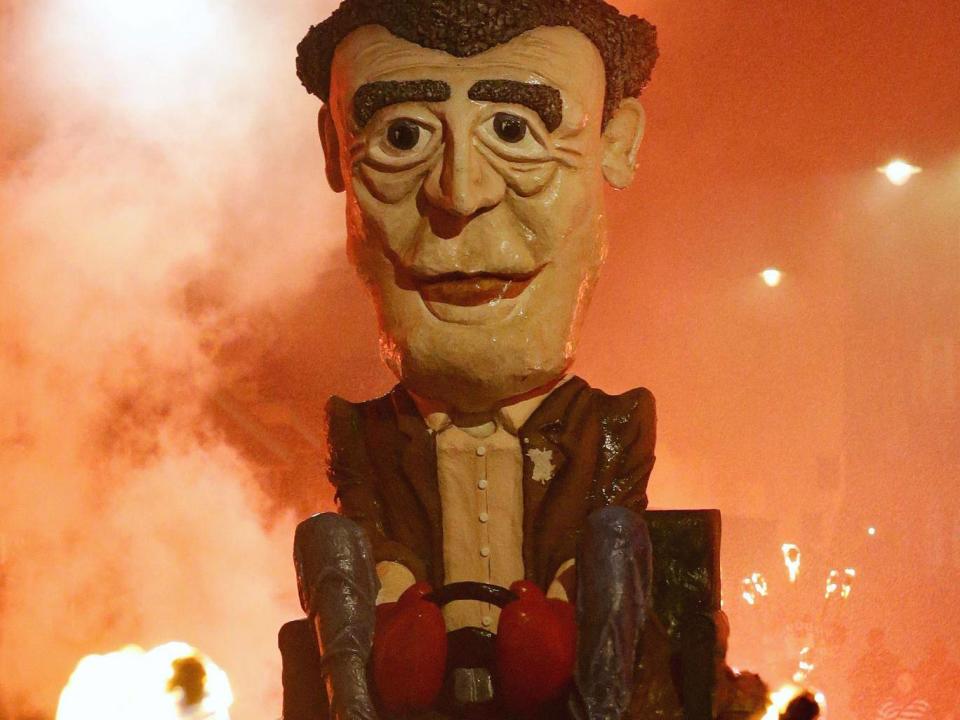Lewes Bonfire: The Sussex town famed for burning effigies of hated public figures
Lewes in East Sussex is busy finessing its preparations to host the UK’s largest Bonfire Night celebration.
The picturesque market town north east of Brighton regularly attracts as many as 80,000 spectators every 5 November to see the costumed processions, fires and firework displays organised by its six bonfire societies.
The most famous aspect of the Lewes festivities - likened to Mardi Gras in New Orleans - is of course its custom of burning effigies of hated public figures, the societies choosing celebrities who have consistently made headlines for the wrong reasons throughout the past year to go up in flames.
In 2017, the townsfolk laid waste to a papier-mache model of North Korean leader Kim Jong-un strapped to a rocket alongside Donald Trump, after the former’s defiance of the international community over missile testing drew him into a game of nuclear brinkmanship with the White House.
Tableaux of Harvey Weinstein and Theresa May as Britannia were also torched.
Previous topical Guys in Lewes have included a boxer-shorted David Cameron holding a pig, Jeremy Clarkson, ex-FIFA president Sepp Blatter, Vladimir Putin, Bashar al-Assad, Muammar Gaddafi, Angela Merkel and Osama bin Laden.

The subjects of this year’s Guys remain a closely-guarded secret but Edenbridge Bonfire Society in Kent has confirmed its own version will be a towering Boris Johnson in cycling helmet and loud Hawaiian shorts, having his EU cake and eating it. President Trump and controversial columnist Katie Hopkins have previously faced incineration there.
Like the rest of the country, Lewes also burns traditional scarecrow replicas of Guy Fawkes in honour of the failure of the Gunpowder Plot of 1605 and a model of Pope Paul V, head of the Catholic Church at the beginning of the 17th century when Fawkes, Robert Catesby and their accomplices were caught in the act of attempting to blow up the House of Lords.

The town’s Bonfire Night traditions also honour the 17 Protestant martyrs burnt at the stake on Lewes High Street between 1555 and 1557 during the reign of Mary I. Seventeen flaming crosses are carried through the town centre and a wreath is laid before the war memorial in tribute.
Those planning to attend are warned that transport congestion can be an issue due to the immense popularity of the event and are advised to buy tickets in advance for the specific bonfire they wish to see, available from the Lewes Bonfire Council website. Local organisers warn that nearby train stations are closed for the evening and that overcrowding can be a problem, offering further advice on the event's blog.
The parades themselves are free to view.
Last year, Lewes revellers agreed to abandon a tradition of dressing as Zulu warriors, which involved blacking up, after complaints were made.
Ending a practice dating back to at least the Second World War, a can of black “Zulux” paint was cast into the fire as a gesture of respect.

 Yahoo News
Yahoo News 